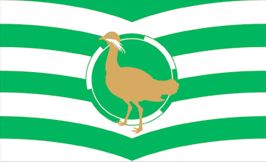Trivia question for Mar-21-2011
Olivia said she liked the way this bird ‘strutted his stuff’ so she is making him the trivia of the day. These guys are one of the worlds heaviest flying birds. They display spectacular courtship performances on open plains and which can be seen as far as two miles away and they are even sometimes mistaken as a flock of sheep.
This bird was formerly native in Great Britain until it was hunted out of existence by the 1840s. Sizeable populations exist in Spain (23,055 birds), Russia (8,000 birds), Turkey (800–3,000 birds), Portugal (1,435 birds) and Mongolia (1,000 birds). Elsewhere, the populations are declining due to habitat loss throughout its range.
So here are Olivia’s questions: This bird forms part of the Coat of Arms from which part of Great Britain? Also tell us what is one of the major causes of death for these poor birds besides habitat loss.
Good Luck 😉
Answer:
Congratulations to Rich for being the first to answer the trivia. The rather large bird we featured is the Great Bustard. The Great Bustard breeds in southern and central Europe, where it is the largest species of bird, and across temperate Asia. European populations are mainly resident, but Asian birds move further south in winter.
The Great Bustard forms part of the design of the Wiltshire Coat of Arms (as depicted above). Wiltshire, (or the County of Wilts) is a ceremonial county in South West England. It is landlocked and borders the counties of Dorset, Somerset, Hampshire, Gloucestershire, Oxfordshire and Berkshire.
Over 80% of Great Bustards die in the first year of life. Chicks are endangered to predation by the fact that they are ground-dwelling birds who are reluctant to fly. Common predators of eggs and hatchlings include raptors, corvids, foxes, badgers and hedgehogs. Chicks grow very quickly, by 6 months nearly a two-thirds of their adult size, and are predated by foxes, wolves and eagles.
Low flying and fairly clumsy, the Great Bustard is also killed ion collisions with power lines and irrigation equipment and a wide range of other obstacles. Here is more on these heavy birds: Great Bustard
Thanks for playing along 😉

